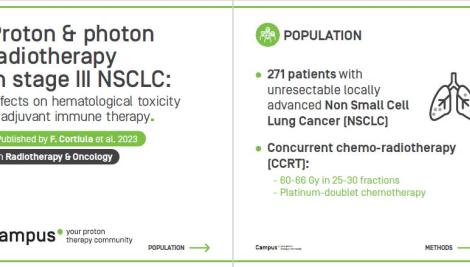Subtitle
Intensity-modulated proton radiation therapy as a radical treatment modality for nasopharyngeal carcinoma in China: A cost-effectiveness analysis.
This is a cost-effectiveness study from China. A Markov model is used with the assumption that IMPT offered NTCP reduction in long-term dysphagia, xerostomia, and hearing loss, compared to IMRT. Base-case evaluation was performed on T2N2M0 nasopharyngeal carcinoma (NPC) of median age (43 years old). A Chinese societal willingness-to-pay threshold (33558 US dollars [$])/quality-adjusted life-year [QALY]) was adopted. This study concluded that IMPT can be cost-effective for average Chinese NPC patients if it provides an NTCP reduction of ≥24%.



